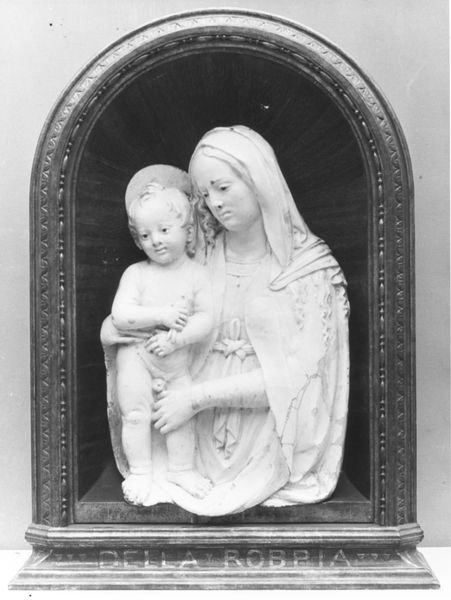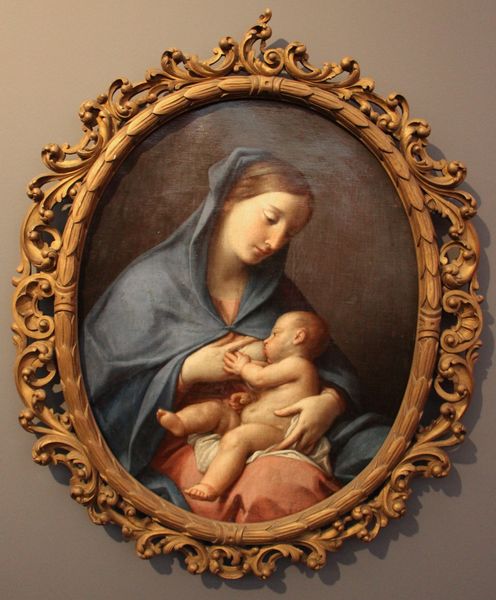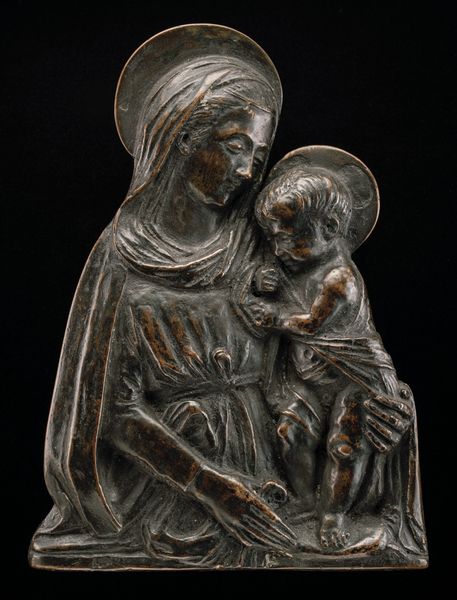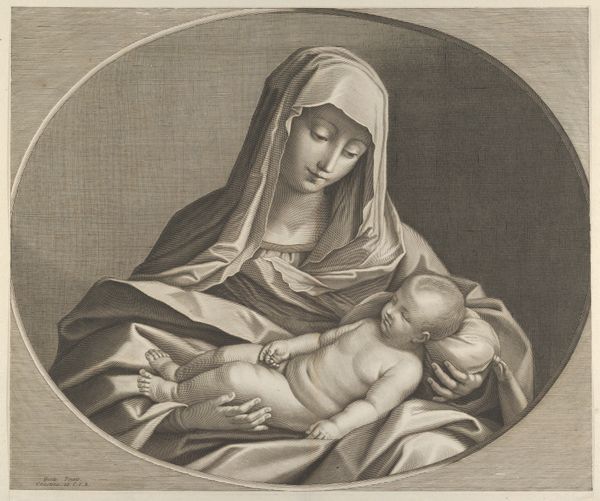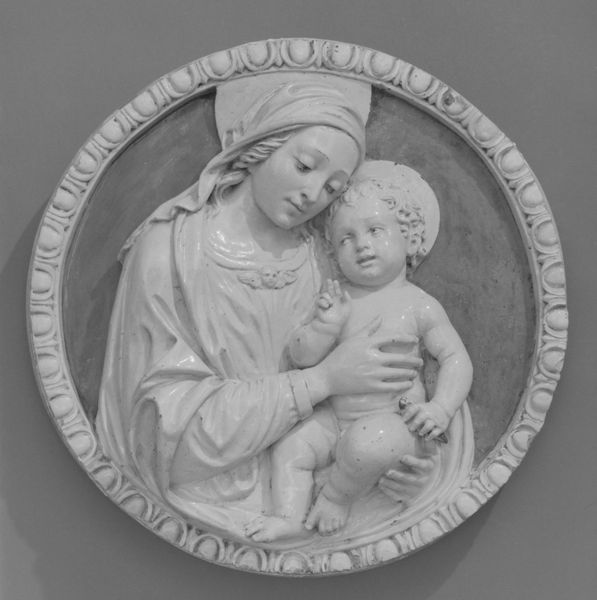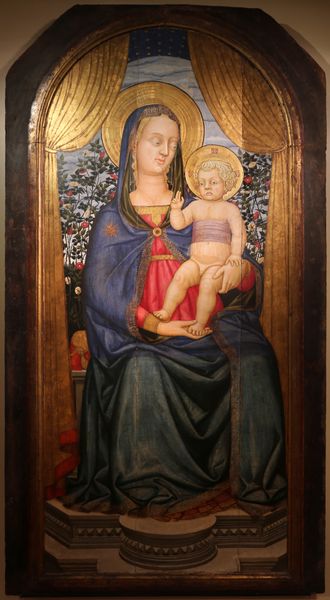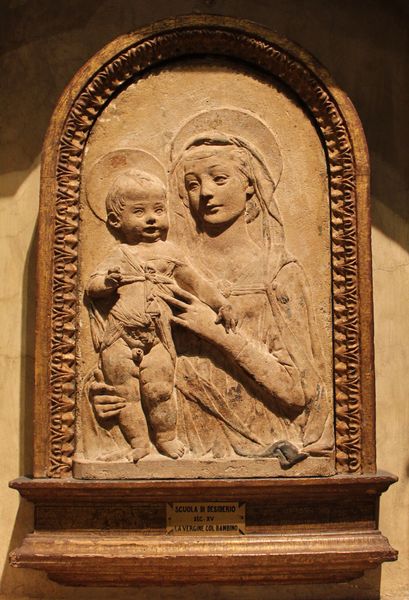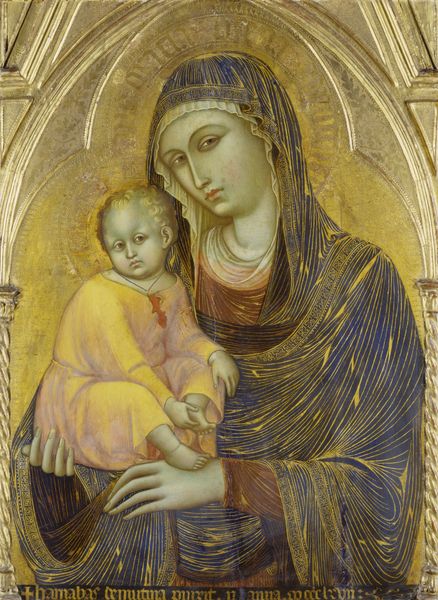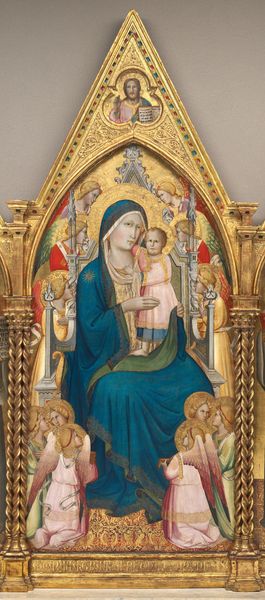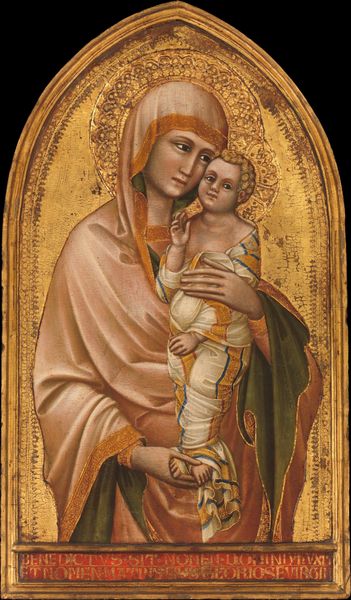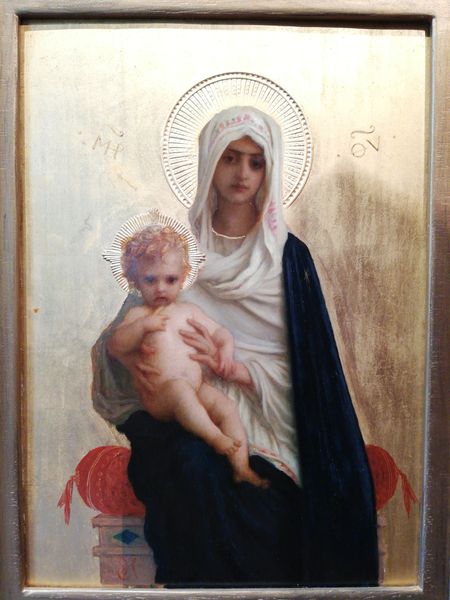
Madonna and Child 1490 - 1500
0:00
0:00
sculpture, marble
#
portrait
#
sculpture
#
figuration
#
sculpture
#
decorative-art
#
marble
#
italian-renaissance
Dimensions: Overall (confirmed, without frame): 31 1/4 × 20 1/4 in., 150.8 lb. (79.4 × 51.4 cm, 68.4 kg)
Copyright: Public Domain
Pietro Lombardo carved this marble sculpture of the Madonna and Child in Italy around the late fifteenth century. Sculptures of the Virgin and Child like this one were popular devotional objects during the Renaissance, and would have been commissioned by wealthy patrons for display in churches, chapels, or even private homes. The sculpture embodies many of the artistic and cultural values of its time. The serene expressions and idealized features of Mary and Jesus reflect the Renaissance interest in classical art and the humanist emphasis on human beauty and dignity. The use of marble, a prized material, and the high level of craftsmanship, demonstrate the patron's wealth and status. The sculpture also reflects the social and religious norms of the time. Mary is depicted as a loving and nurturing mother, but also as a figure of reverence and authority. The Christ Child is shown as both human and divine. To fully understand the sculpture's meaning, we can consult contemporary religious texts, historical accounts, and studies of patronage and artistic production in Renaissance Italy. Art is a product of its time.
Comments
No comments
Be the first to comment and join the conversation on the ultimate creative platform.
